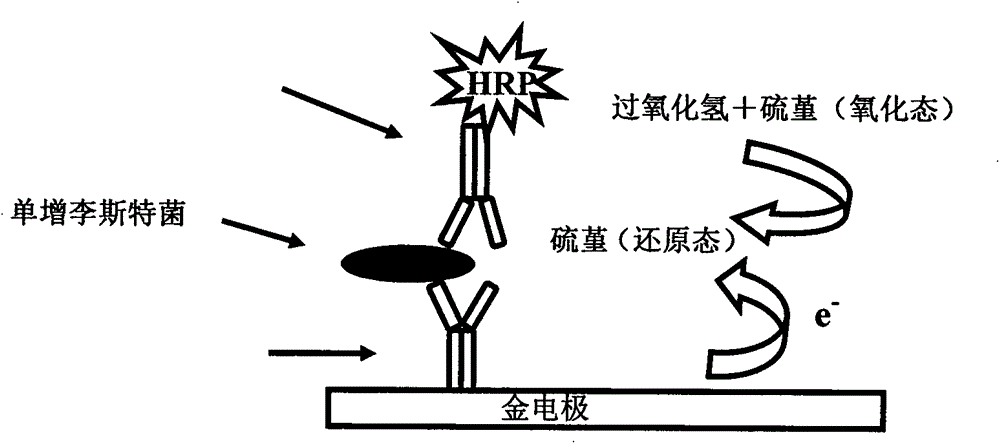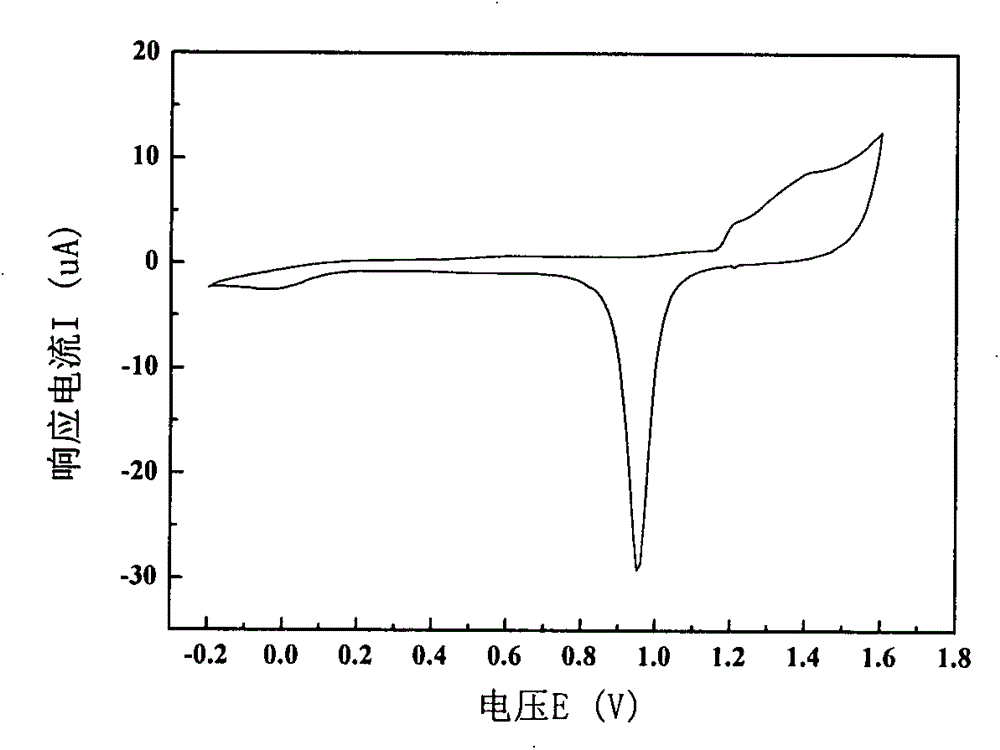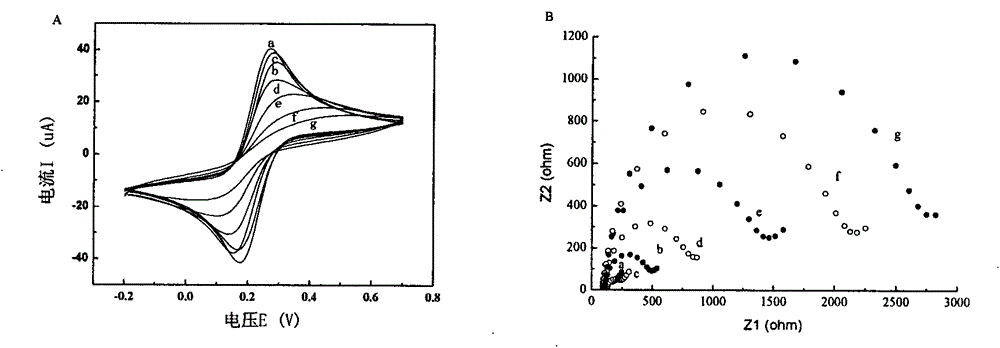Electrochemical immunosensing method for detecting Listeria monocytogenes
A Listeria monocytogenes and immune sensor technology, applied in the field of biotechnology detection, can solve the problems of time-consuming, labor-intensive, prone to false positives, cumbersome steps, etc.
- Summary
- Abstract
- Description
- Claims
- Application Information
AI Technical Summary
Problems solved by technology
Method used
Image
Examples
Embodiment approach 1
[0026] Embodiment 1: Fabrication of Immunosensors on the Electrode Surface of Electrochemical Sensors
[0027] (1) Polish the gold electrode in circles on 2000 mesh, 3000 mesh, 5000 mesh sandpaper or in Piranha solution (H 2 o 2 / H 2 SO 4 , 1:3, v / v) for 5 minutes, washed with ultrapure water, and then 1.0μm, 0.3μm, 0.05μm A1 2 o 3 The powder is adjusted into a suspension and polished on the suede, washed with ultra-pure water; the clean gold electrode is placed in 0.1M H 2 SO 4 Carry out cyclic voltammetry scanning (voltage range -0.2V~1.2V, scanning rate 50mV / s) cleaning in the solution until a stable cyclic voltammetry diagram is obtained; then in 0.05M H 2 SO 4 Activate in the solution (voltage range -0.2V~1.6V, scan rate 50mV / s), until a smooth reduction peak is obtained at about 0.94V, wash with ultrapure water, and blow dry with nitrogen;
[0028] (2) Place the treated gold electrode in 2 mL of 1% 3-mercaptopropionic acid ethanol solution for self-assembly, over...
Embodiment approach 2
[0032] Embodiment 2: Detection of Listeria monocytogenes by sandwich electrochemical immunosensor based on enzyme amplification
[0033] (1) React the prepared immunosensor with blank solution PBS at 37°C, then react with HRP-labeled polyclonal antibody at 37°C for 30min, and finally detect with chronoamperometry, and the obtained value is negative;
[0034] (2) Listeria monocytogenes solution (10 7 CFU / ml, 10 6 CFU / ml...10 1 CFU / ml), respectively incubated with the prepared immunosensor at 37°C for 1h, then reacted with HRP-labeled polyclonal antibody, incubated at 37°C for 30min, and finally detected the current response value by chronoamperometry on the electrochemical sensor , use 0.01M glycine-HCl solution to regenerate for 5min, remove the combined LM, and cycle for 10 1 CFU / ml-10 7 LM within the concentration range of CFU / ml was detected.
[0035](3) The difference between the current response and the logarithmic value of the LM concentration and the standard curve...
PUM
 Login to View More
Login to View More Abstract
Description
Claims
Application Information
 Login to View More
Login to View More - R&D
- Intellectual Property
- Life Sciences
- Materials
- Tech Scout
- Unparalleled Data Quality
- Higher Quality Content
- 60% Fewer Hallucinations
Browse by: Latest US Patents, China's latest patents, Technical Efficacy Thesaurus, Application Domain, Technology Topic, Popular Technical Reports.
© 2025 PatSnap. All rights reserved.Legal|Privacy policy|Modern Slavery Act Transparency Statement|Sitemap|About US| Contact US: help@patsnap.com



